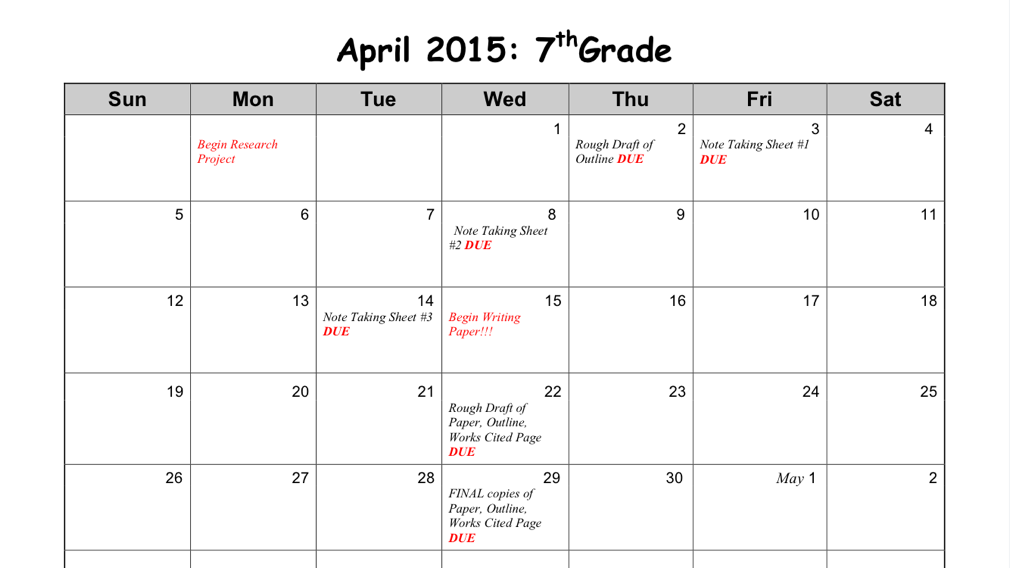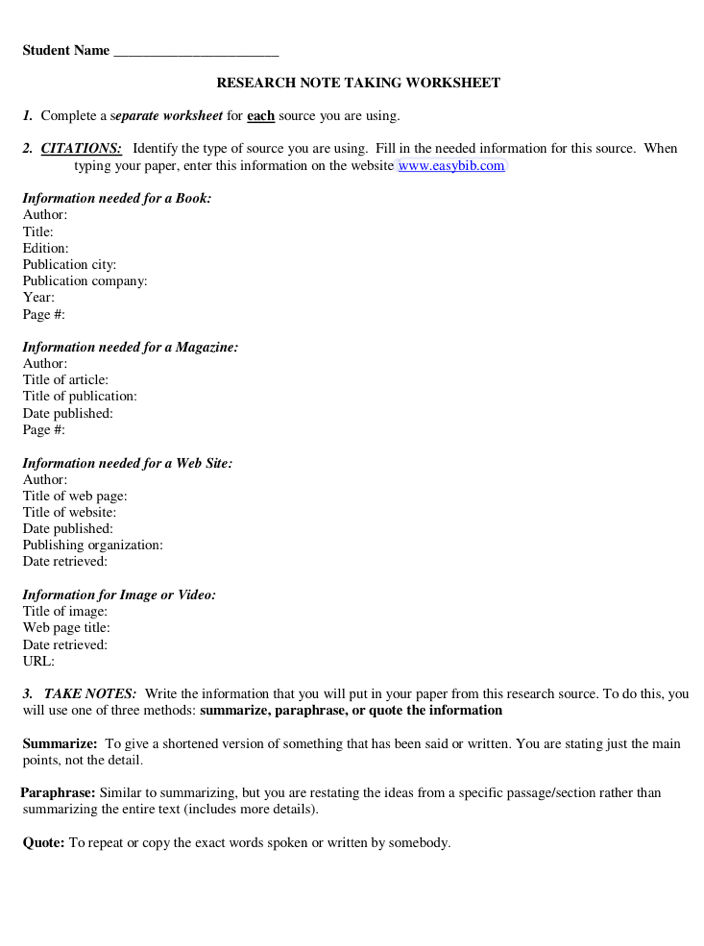Step-by-step research project
Research has changed from the old days of checking books out of the library and handwriting notes on 3 x 5 cards. Learning to navigate the online world, evaluate sources, and put together a well-documented paper may continue to evolve along with technology. Therefore, it’s wise to periodically revisit and revise research paper technique.
Here are my best tips for creating a research project to fit any assignment.
Select a Topic
First, I begin with my own research as I search for topics and sources that fit my project. When possible, I like to be able to guide my students towards helpful sites instead of simply setting them loose on Google.
- Library Spot http://www.libraryspot.com/
- Brain Pop https://www.brainpop.com/
- National Geographic Kids http://kids.nationalgeographic.com/
- Info Please, Year-by-Year http://www.infoplease.com/yearbyyear.html
- World Almanac for Kids http://www.worldalmanacforkids.com/
- New York Public Library Online http://www.nypl.org/collections/articles-databases
Create a Timeframe
Next I set deadlines for each aspect of the project using a calendar template. A project calendar might look like this:
Outline
My students use this form to create an outline to guide their research. I usually require a preliminary outline and a final outline at the end of the project. It can be informative to see how the outline evolves and becomes more detailed from start to finish.
Use a site like this to help students develop an outline: https://owl.english.purdue.edu/owl/resource/544/03/
Take Notes
My students take notes on forms that I share online. The forms may also be printed. Here’s the basic info I include:
Cite Properly
Before the students begin writing, we review the MLA citation format. This information can be found in many places. Here are two of my favorites:
- The Purdue OWL Online Lab https://owl.english.purdue.edu/owl/resource/747/01/
- The MLA Citation Machine http://www.citationmachine.net/mla/cite-a-book
Time to write!
They have read, researched, note – now it’s time to write! This can seem overwhelming to students. Remind them they have already done the hard work; they have created a guide for their paper known as an outline. Instruct them first develop a strong thesis. From there, they can use their outline as the skeleton for their paper, fleshing out each point as they go. Remind them again during the writing process about properly using quotes and paraphrases and how to steer clear of plagiarism.
Share your learning!
One of the perks in researching as a group is hearing the students share what they’re learning with each other. Use those informal discussions to inspire other projects and topics for future research papers.
Renee Ann Smith teaches literature in a Christian high school by day and writes stories by night. She reviews books and shares inspirational posts on her blog Doorkeeper at http://reneeannsmith.com/. You can also find her on Twitter at https://twitter.com/ReneeAnnSmith.






